On 20 June 2019, a first European Clean Air Day was organized by the ECSA-air-quality working group. On this day, live events were organized in eight cities across Europe, raising awareness about air quality and citizen science. In 7 EU countries, live events were held: in Berlin, Beverwijk (Amsterdam region), Budapest, Ispra, Katowice, Oslo, Porto, Utrecht and Zwolle.
The activities varied from holding do-it-yourself sensor-building meetups, doing ‘hackatons’ on visualizing air quality, organizing a symposium, creating posters in schools and making a stand in a museum. While some activities focused on social-political aspects such as citizen engagement and empowerment, other live events presented and discussed technical aspects of sensors, data platforms and measurement methods. A selection of events is reported in this blog post.
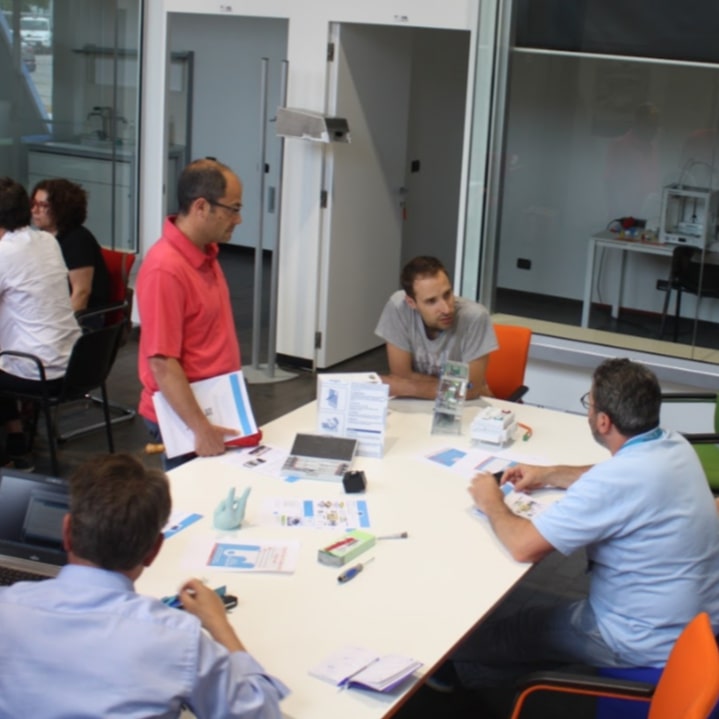
Meetup in the JRC Makerspace in Ispra, Joint Research Centre
In the newly established JRC Makerspace in Ispra, discussing around tech. Demounted AirSensEUR units to discuss the implications and possibilities for deployment and reuse of the existing prototypes. Decided to offer the transparent box as part of the JRC Visitor Centre and at the Citizen Space that is in the making. (Photo: Sven Schade)
The citizen science and air quality teams of the European Commission’s Joint Research Centre (JRC) held a symposium in the new ‘JRC Makerspace’ on this first European Clean Air Day. The open data platform and hardware/software of the AirSensEUR sensing toolkit served as a common denominator for the discussion. With sensors and boxes on the table, many different discussions emerged all across the room. It’s a consideration to use the JRC Makerspace as an opportunity to invite more researchers and experts of open sensor-platforms in the future.
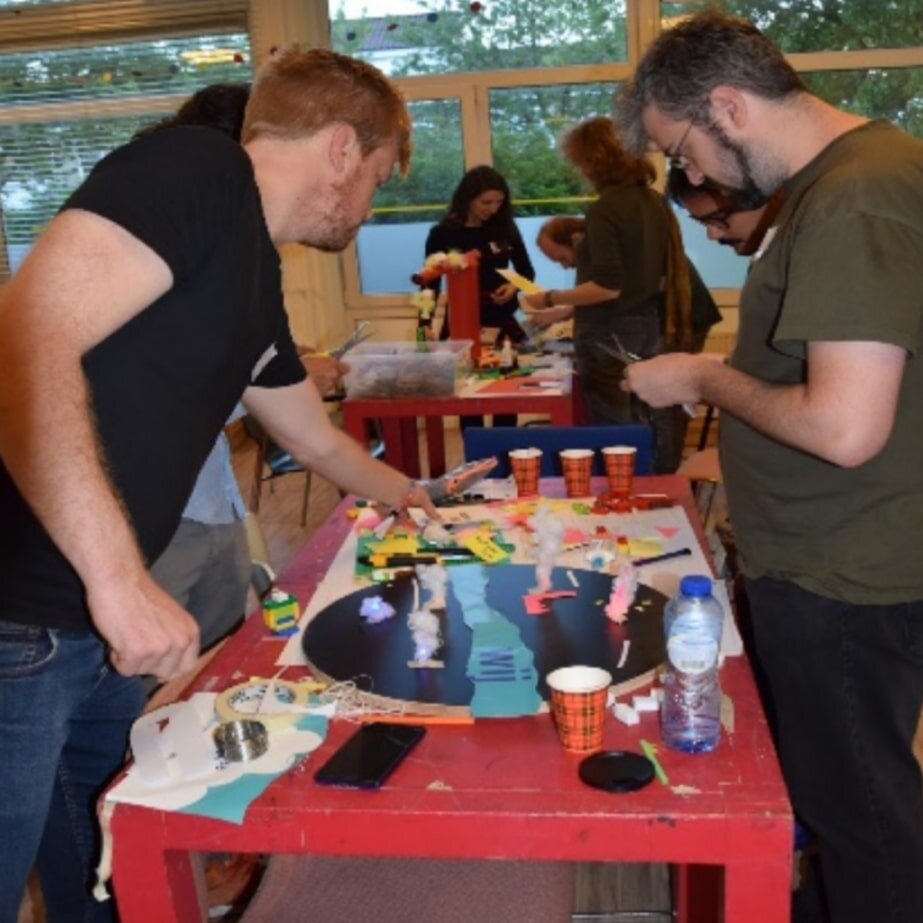
Hackaton in Beverwijk, visualizing air quality in North-Holland
Teams creating prototypes of how air quality information can be visualized in the open space. Hackaton organized by Waag Society, Studio O and Province North-Holland. (Photo: Judith Veenkamp)
In the Hackaton in North-Holland, the challenge was: How to engage and create awareness through visualization about air quality levels in the public domain. The town Beverwijk is located in the immediate influence sphere of Tata Steel, one of the large steel producers in Europe and the biggest CO2 emitting factory of the Netherlands. Since a few years, ‘graphite rains’ have become a new phenomenon in the surrounding region near the Tata Steel factory, due to new production processes. Cars, gardens, streets and houses are covered with black graphite layers. A recent research report has shown evidence that these graphite rains are harmful. During the Hackaton, researchers and citizens invented creative ideas of how actual air quality levels can be made visible on urban squares, with interactive art work. To raise awareness among the public, and communicate when heavy pollution episodes are being monitored.
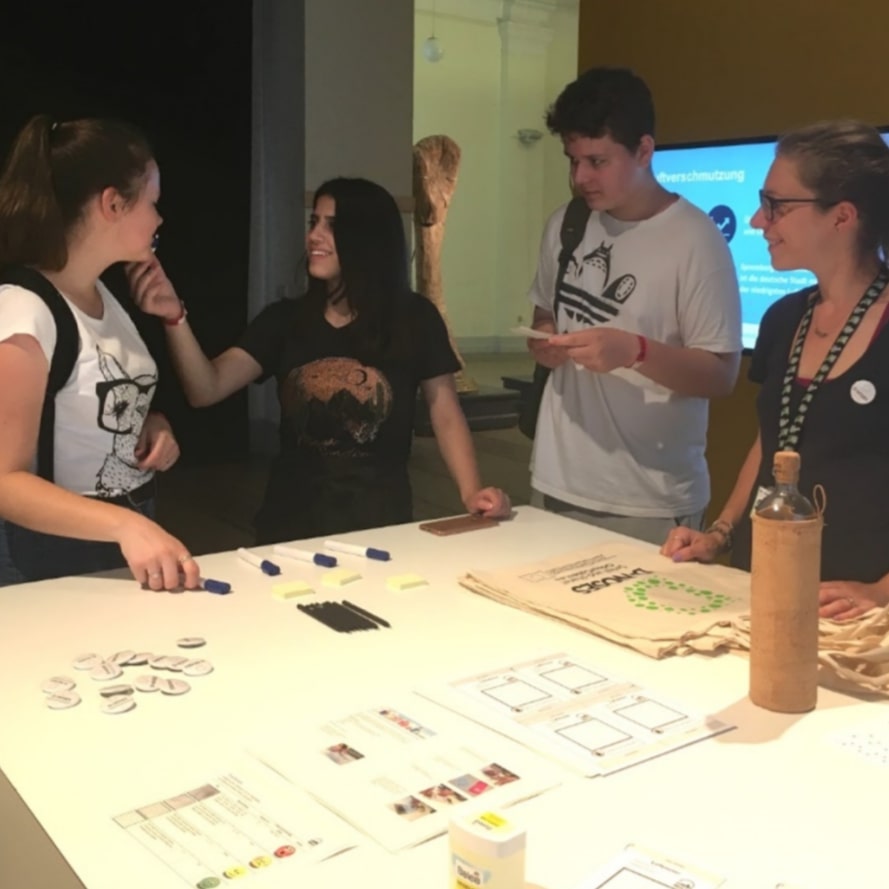
Stand in the Museum für Naturkunde in Berlin
Visitors at the stand sniffing odours in the Museum für Naturkunde in Berlin. (Photo: Simone Ruefenacht)
The Museum für Naturkunde in Berlin had a stand for visitors. ECSA members presented apps, information and small experiments on air quality monitoring and odour sensing. People were invited to smell the sniffing sticks and guess the associated odour as a fun way of increasing participation and engagement. The sticks smell like waste, waste water, chemical, and brewery odours. These odours are common near facilities in Europe. The D-NOSES project was explained, for instance with an OdourCollect app, a tool to add own odour observations to a collaborative map.
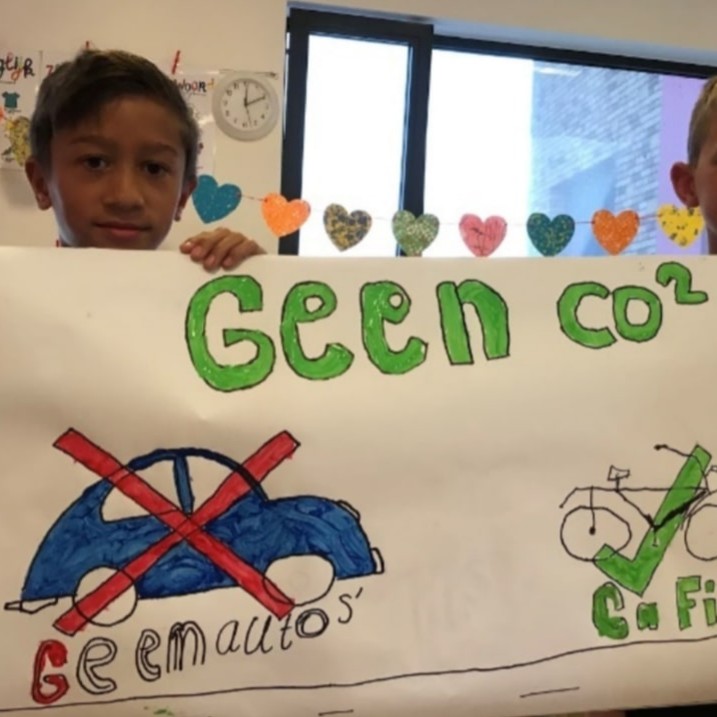
Schools: express ideas on cleaner air with children
School children in Zwolle make posters to participate in the European Clean Air Day 2019. An impression of the event at school ‘Het Festival’: https://youtu.be/uYCIXsjjXCA. (Photo: https://twitter.com/CleanAirDayEU)
During the first European Clean Air Day, simple, free ‘air meters’ were deployed in Germany, Netherlands, Norway and Portugal. In Oslo, several school classes have tested this free method, which is developed for both ‘Oslo Green Capital year’ and for the first European Clean Air Day (ECAD). Children have participated very enthusiastically (see ). Meanwhile, the school ‘Het Festival’ in Zwolle has worked with school children on thinking about ‘what you can do yourself.’ They made posters with drawings to express the children’s contribution to Clean Air Day 2019, inspired by the activities of the ‘UK Clean Air Day’ organized by Global Action Plan.
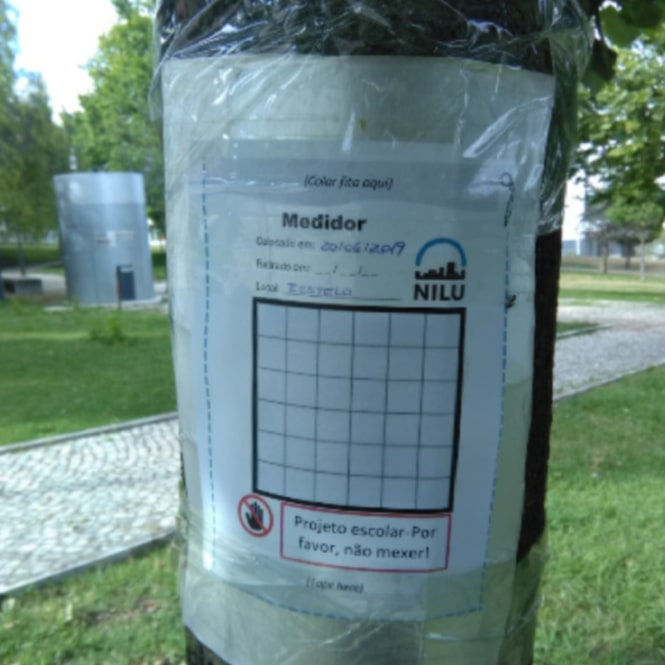
Do-It-Yourself methods and plans for Clean Air Day 2020
An air meter applied in Portugal. (photo: Marta Camera Oliviera)
The primary goal of this European Clean Air Day has been to engage citizens across Europe in doing science on air pollution. The long-term vision is to channel and align the various practices and communities, bringing them together. This idea is born in 2018 and has been institutionalized during the ECSA2018 conference in Geneva. In 2019, a has been set-up to provide short introductions and easy-to-understand methods for citizens who want to become active. Two methods have been selected that are promoted on the website: the low-cost ‘luftdaten’ method and the free ‘air meter’ method.
In 2020, the working group Ecsa-air-quality will organize a second European Clean Air Day. To prepare actions, the working group will seek cooperation with ngo’s, researchers and institutions, in order to embed the Clean Air Day in a global cooperative ‘ecosystem’ of organisations, partnerships and communities. The strategy will be to organize a variety of ‘live events’, while the common goal for international coordination and global awareness raising will remain the same: to engage more people and unite communities with a common goal, advancing ‘citizen science on air quality.’
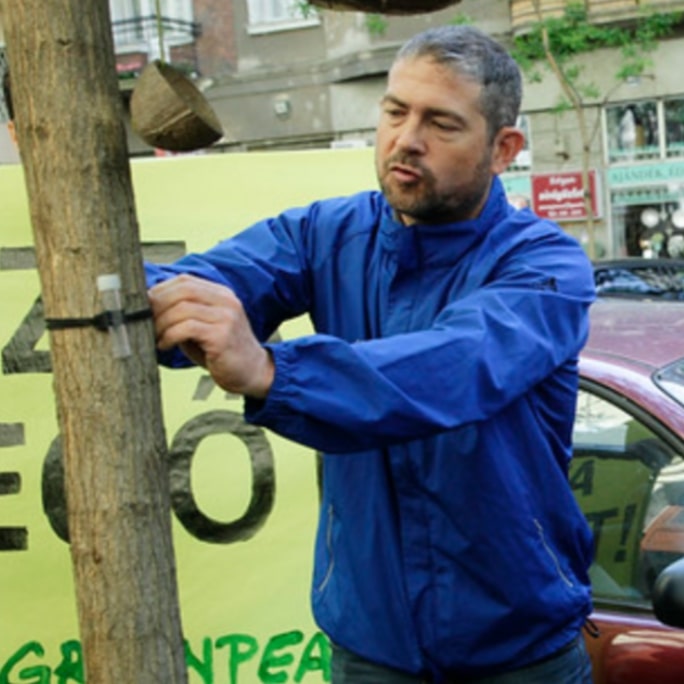
Budapest for clean air
Several domestic and international initiatives aim to get a better picture of air quality by using the currently available IoT, community mapping and sensor technologies were presented at the exhibition.
Greenpeace mostly measured higher levels of air pollution around schools than the measured values of the official local stations in the same period. This means that the air quality where many children stay for a long time is worse than previously thought. The measured results exceeded the limit of 40 micrograms per year for cubic meters of nitrogen dioxide (NO2) around most of the schools that joined the campaign. Erika Frekot presented the diverse activities that Ady School is doing to make students sensitive to environmental problems. We have invited teachers and students from elementary schools to measure PM in their neighborhoods, using simple measuring methods. “Clean air for all” is a school project on air pollution that NILU has developed and which is now available for Hungarian schools.
Civil ionizing radiation measurements: Zoltán Gémesi (Szent István University), Gábor Garamhegyi (Dénes Gábor High and Grammar School) and István Róbert Nikolényi (Szent István University) and Györgyi Bela (DIY Science Lab) talked about that citizens carry out measurements of radioactivity in the environment with various devices (smartphones, DIY sensors, low-cost commercial sensors) and they share data and experiences through collaborative mapping tools. Existing citizen science initiatives for monitoring of radioactivity in the environment: concentrate on monitoring radiation dose, surface contamination. It is expected that in the event of a nuclear or radiological incident the citizen science initiatives will expand in the region.
Gábor Garamhegyi talked about the implementation of the SAFECAST project in Gábor Dénes School in Isaszeg. As part of this project, students independently assemble a detector unit of Safecast bGeige Nano, which enables the authentic measurement, electronic logging and regular monitoring of radioactive radiation. They can do measurements with these devices in their living room, outdoors or even actively in sports. The results can be shared, discussed and uploaded to the web.
CODE4HUNGARY: Sándor Léderer, Orsi Barsi Orsi (K-Monitor), Györgyi Bela (DIY Science Lab), Julianna Faludi (Budapest Corvinus University) talked about the Code-for-All movement that is an international network of civic tech organizations that drive change through digital technology, citizen participation, collaborative decision-making and good governance to deliver solutions for social challenges while improving the relationship between governments and residents. In Hungary the ‘collective monitoring of the environment’ and ‘turn data into awareness and action’ currently are in focus. Code for All and Code for Hungary is open to new partners and co-creators and we invited the participants to get involved.
The technology of civil co-operation: Vilmos Levente Kovács, Csaba Kocsis and Györgyi Bela talked about: Csaba Kocsis is a DIY innovator who uses technology to make society better. Csaba talked about some of his own technology development and why does he work on these solutions. Vilmos Levente Kovács introduced some new technologies that are useful for civil initiatives. Furthermore, he talked about how to build a business from IoT.
